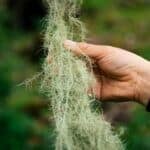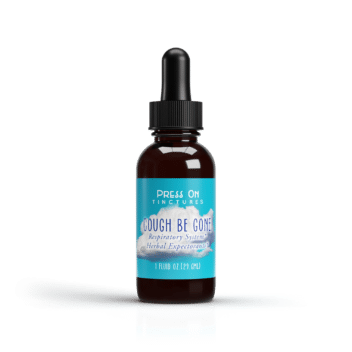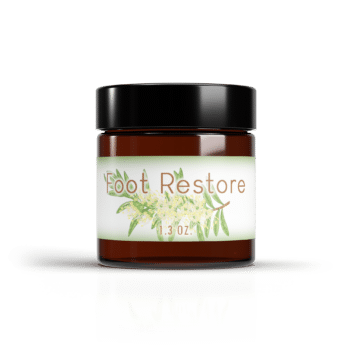
Usnea in Herbal Medicine
Usnea in Herbal Medicine
Usnea is a type of lichen, which is a composite organism arising from a symbiotic relationship between fungi and algae. It thrives in damp, forested environments, often seen hanging from tree branches like a greenish-gray beard, earning it the nickname “Old Man’s Beard.” Unlike typical plants, lichens like usnea can photosynthesize due to their algal component, while the fungal part allows them to absorb moisture and nutrients from the air and surroundings. This unique adaptation enables usnea to survive in diverse climates, making it a resilient and widespread presence in forests around the world.
Historical Use of Usnea
Historically, usnea has been held in high esteem across various cultures for its medicinal properties. In European traditional medicine, usnea was often utilized for its believed ability to support respiratory health and accelerate wound healing. Similarly, in Chinese traditional medicine, it has been employed as a remedy to treat infections and maintain overall health. Its use as a natural antimicrobial agent has a long-standing history, dating back to times when synthetic antibiotics were not available. This historical reliance on usnea underscores its enduring reputation as a versatile and effective natural remedy.
In addition to its use in traditional European and Chinese medicine, usnea has been part of indigenous healing practices in various parts of the world. Many indigenous cultures have recognized the potential of usnea to treat a variety of ailments, leveraging its natural properties to support overall well-being. The historical use of usnea is a testament to its versatility and the universal recognition of its healing potential across diverse cultures and healing systems.
Benefits of Usnea
Usnea is highly valued for its array of potential health benefits, contributing to its enduring popularity in herbal medicine. Below are some of the primary advantages associated with this remarkable lichen:
Antimicrobial Properties
One of the standout features of usnea is its powerful antimicrobial properties, attributed to the presence of usnic acid. This compound is known for its effectiveness against a wide range of bacteria, fungi, and viruses, making usnea a valuable ally in combating infections. For centuries, herbalists have harnessed the antimicrobial effects of usnea to aid in wound healing and prevent infections, especially in settings where conventional antibiotics were unavailable.
The antimicrobial prowess of usnea extends to its use in treating skin infections and respiratory ailments. Its application in salves and ointments can help prevent infections in cuts and abrasions, while its inclusion in teas and tinctures can aid in soothing throat infections and respiratory issues. This multifaceted antimicrobial action makes usnea a versatile tool in natural medicine, offering a natural alternative to synthetic antimicrobial agents.
Respiratory Support
Usnea is frequently utilized to support respiratory health, particularly for its ability to soothe irritated mucous membranes. Its natural compounds can help alleviate symptoms of coughs, colds, and other respiratory issues, providing relief to individuals suffering from these conditions. Additionally, the antimicrobial properties of usnea make it a valuable ally in addressing respiratory infections, helping to clear pathogens from the respiratory tract.
In traditional medicine, usnea has been used to treat various respiratory conditions, including bronchitis and pneumonia. Its ability to ease breathing and reduce inflammation in the respiratory system makes it a popular choice among herbalists seeking natural remedies for lung health. By incorporating usnea into their routine, individuals can potentially experience improved respiratory function and greater comfort during times of illness.
Immune System Support
Usnea is also known for its role in supporting the immune system. By bolstering the body’s natural defenses, usnea can help prevent illness and maintain overall health. Its ability to enhance immune function makes it a valuable addition to any wellness routine, particularly during times of increased stress or exposure to pathogens.
Incorporating usnea into a daily regimen can contribute to a more robust immune response, helping the body fend off infections and recover more quickly from illness. Its immune-supporting properties make it an appealing option for individuals seeking to enhance their natural defenses and maintain optimal health.
Digestive Health
The antimicrobial properties of usnea extend to the digestive system, where it can help maintain a healthy balance of gut flora. By combating harmful bacteria in the digestive tract, usnea can contribute to improved digestive health and overall well-being. Its potential to support a healthy gut environment makes it a valuable tool in promoting digestive harmony.
Usnea’s benefits for digestive health are particularly relevant in the context of modern lifestyles, where factors such as poor diet and stress can disrupt the delicate balance of gut bacteria. By incorporating usnea into their regimen, individuals can support their digestive health naturally and effectively, promoting a balanced gut microbiome and overall wellness.
How to Use Usnea
Usnea can be utilized in various forms, including tinctures, teas, and topical applications. Each method offers unique benefits and can be tailored to suit individual preferences and health needs. Here, we explore some of the most common methods of incorporating usnea into your herbal routine.
Usnea Tincture
A usnea tincture is a concentrated liquid extract made by soaking usnea in alcohol. This method effectively captures the beneficial compounds of usnea, allowing for easy incorporation into your daily routine. Tinctures offer a convenient way to consume usnea, as they can be taken directly or added to water or juice for consumption. To use a usnea tincture, follow the instructions on the product label or consult with a healthcare professional for personalized guidance.
The versatility of usnea tinctures makes them a popular choice for those seeking to experience the lichen’s health benefits. They can be used to support immune function, respiratory health, and overall wellness, providing a potent and easily accessible form of usnea’s healing properties.
Usnea Tea
Usnea can also be brewed as a tea, offering a soothing and aromatic way to enjoy its health benefits. To make usnea tea, steep dried usnea in hot water for several minutes, allowing the beneficial compounds to infuse into the liquid. The resulting tea can be consumed on its own or blended with other herbs to enhance flavor and therapeutic effects. Given usnea’s strong flavor, adding honey or lemon can improve palatability and complement its health benefits.
Usnea tea is a popular choice for individuals seeking natural support for respiratory health and immune function. Its soothing properties can provide relief during times of illness or stress, making it a valuable addition to any wellness routine.
Topical Applications
For wound care and skin health, usnea can be applied topically. It is often used in salves, ointments, or poultices to take advantage of its antimicrobial properties and promote healing. Applying usnea topically can help prevent infections in cuts and abrasions, while also soothing skin irritations and supporting overall skin health.
Topical usnea applications are particularly beneficial for individuals with sensitive skin or those prone to infections. By leveraging usnea’s natural properties, individuals can address skin concerns naturally and effectively, promoting healing and maintaining healthy skin.
Safety and Precautions
While usnea is generally considered safe for most people when used appropriately, there are some precautions to keep in mind to ensure safe and effective use:
- Allergies: If you have a known allergy to lichens or any of the components in usnea, avoid using it. Allergic reactions can vary in severity, so it is important to exercise caution and discontinue use if any adverse reactions occur.
- Pregnancy and Nursing: As with any herbal remedy, pregnant or nursing women should consult a healthcare provider before using usnea. This precaution ensures that both mother and child remain safe and that any potential risks are appropriately managed.
- Consultation: Always speak with a healthcare professional before starting any new herbal regimen, especially if you have underlying health conditions or are taking medications. This step is crucial to ensure that usnea is safe and appropriate for your specific health needs and circumstances.
Sustainable Harvesting of Usnea
When using natural resources like usnea, it’s important to consider sustainable harvesting practices. Usnea grows slowly and is sensitive to environmental changes, so ethical harvesting is crucial to preserving this resource for future generations. If you’re foraging for usnea, take only what you need and avoid damaging the surrounding environment. Consider leaving some of the lichen on each tree to allow for regrowth and continued ecological balance.
Sustainable harvesting not only protects usnea populations but also ensures that its benefits remain accessible to future generations. By practicing mindful and ethical foraging, we can contribute to the preservation of natural resources and promote environmental stewardship.
Conclusion
Usnea is a versatile and powerful herbal remedy with a long history of use in traditional medicine. Its antimicrobial, respiratory, immune, and digestive benefits make it a valuable addition to any herbal medicine cabinet. By understanding its uses and respecting sustainable harvesting practices, you can incorporate usnea into your wellness routine safely and effectively. Whether you choose to use usnea in tincture form, as a tea, or topically, its benefits are sure to support your health naturally. With its diverse range of applications and enduring reputation, usnea offers a natural and effective way to enhance well-being and promote holistic health.


